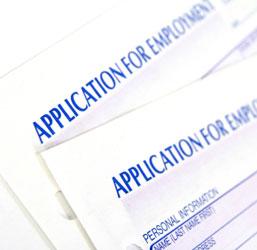Resumes & Applications
Resumes & Applications
Whenever you apply for a state examination or transfer opportunity, you’ll need to complete a state application. You can usually obtain this form (STD 678) at your personnel office. Read the announcement to determine if a resume or supporting documents are required.
The Employment Development Department (EDD) website has some great resources for Job Seekers in California. You can find some tools on searching for a job, examples of resume types, job fairs and workshops, resources on gathering information for the workforce which may help you determine if certain state departments are projected to have openings in the years to come.
A resume can highlight your accomplishments when applying for a transfer or engaging in interviews. It may give you an edge over someone who did the bare minimum and only completed the state application.
Here are some useful sites that offer resources on searching for a job, changing careers, writing resumes, and cover letters. Some of the sites are blogs and therefore change over time so check these pages often.
Writing a Cover Letter
A potential employer does not usually interview everyone who applies for the job. You must convince the employer that you are one of the applicants who should be interviewed. The cover letter is the means by which you sell yourself to an employer. The cover letter is in many cases the first impression the employer has of you. You want that impression to be a good one. Your cover letter must be typed, neat, organized, and grammatically correct. It should be printed on good quality bond paper in either ivory or white. (Use the same type of paper for your resume, so the two match.)
DOs & DON’Ts for Resume Writing
Resume Writing DOs
- Review your resume carefully for spelling and grammatical errors.
- Present your information in a neat, organized and professional manner.
- Outline specific duties for each position listed.
- Include individual accomplishments for each position.
- Detail your responsibilities for each position.
- Use action words; avoid weak or passive language.
- Maintain consistency throughout the entire resume with display techniques, punctuation, verb tense, dates and spacing.
- Use bullets to describe
Resume Formats
Chronological resume
The chronological resume is designed to present your employment information by date, beginning with the most recent position.
This resume style stresses the positions you have held and the companies where you have worked. The chronological resume format is most appropriate for people who can demonstrate an employment history with no large gaps between jobs. This type of resume is also good when you are not making a dramatic change in career direction.
Writing a Resume
A resume is a summary of your experiences, skills, achievements and successes which are relevant to the field of work you would like to enter. By highlighting your accomplishments, a resume “advertises” to a potential employer that you are qualified for the job you are seeking, and is a means of introducing yourself. Often, an employer will only spend 30-60 seconds scanning your resume to determine your qualifications and decide if they are interested in you. It is important to remember that a resume is not intended to be a biography or complete history of everything you have done.

